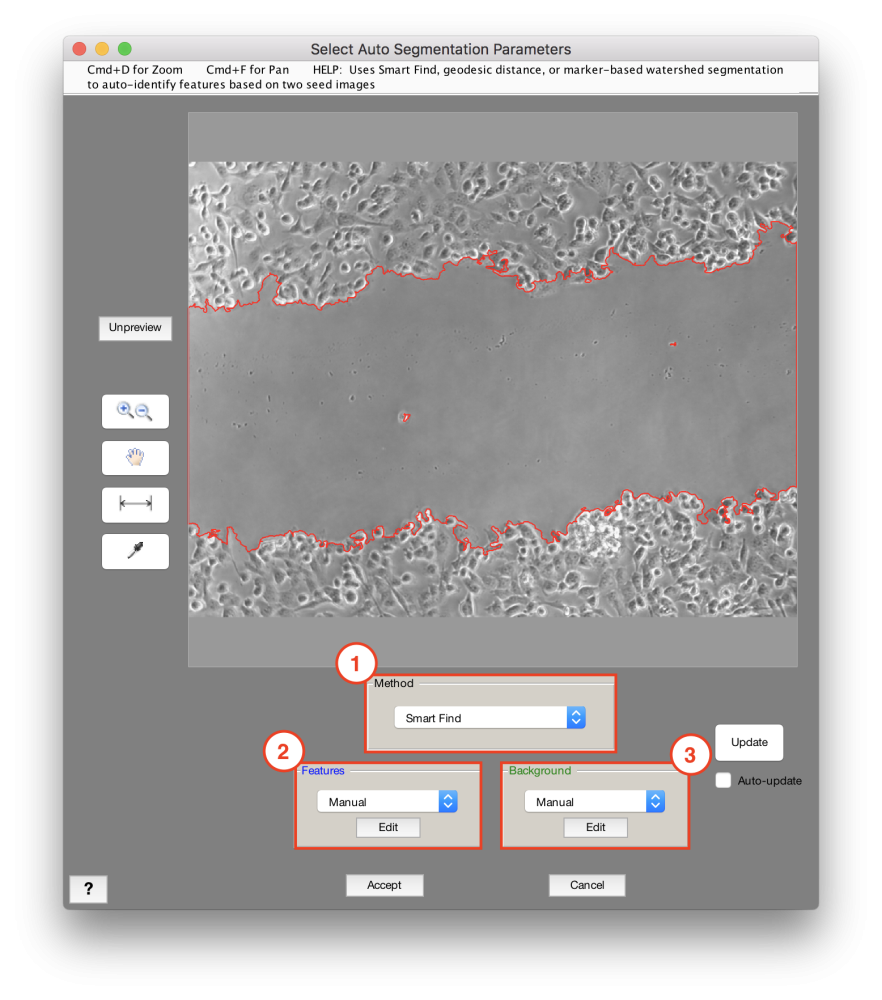Segmentation > Auto Segmentation
May use up to two B/W memory images
Uses Smart Find™, geodesic distance, or marker-based watershed segmentation to auto-identify features based on two seed images. One seed image roughly identifies features and the other the background. Seed images can be any of the available B/W memory images.


1. Method
- Smart Find: Uses a graph cut algorithm [1] to auto-determine feature boundaries in the image based on the feature and background markers. The most effective algorithm for this purpose. Effective even when only “scribbles” have been manually drawn and stored as memory images, and especially effective when partial selections of some features and background have been made from other Recipe steps.
- Geodesic Distance: Uses the geodesic distance method [2] to auto-determine feature boundaries in the image based on the feature and background markers. Useful when only partial selections of nearly all features have been captured and the user needs the software to “snap” the boundaries into place.
- Marker-Based Watershed: First forces the image to have local minima at the feature and background marker locations. Then applies the watershed algorithm [3] to auto-determine feature boundaries. Tends to grow the existing feature boundaries about halfway to the background markers.
2. Features
Uses manual tracings, or takes selected (black) features from a memory image, to help identify features for auto segmentation
3. Background
Uses manual tracings, or takes selected (black) features from a memory image, to help identify the background for auto segmentation
References
[1] Y. Li, S. Jian, C. Tang, H. Shum, Lazy Snapping In Proceedings from the 31st International Conference on Computer Graphics and Interactive Techniques, 2004.
[2] A. Protiere and G. Sapiro, Interactive Image Segmentation via Adaptive Weighted Distances, IEEE Transactions on Image Processing, Volume 16, Issue 4, 2007.
[3] Meyer, Fernand, “Topographic distance and watershed lines,” Signal Processing , Vol. 38, July 1994, pp. 113-125.
Demo
Tutorial
Need more help with this?
Chat with an expert now ››


